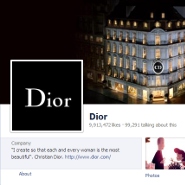- About
- Subscribe Now
- New York,
July 17, 2013

Almost all consumers who are planning to buy luxury in the next year communicate through digital platforms and 88 percent of these adults use social media platforms, according to a new report from the Shullman Research Center.
The “Social Networking Among Luxury Purchasers” report found that affluent adults who buy luxury goods are more likely to communicate with friends and family through digital and social media platforms compared to their non-luxury buying counterparts. Luxury brands should find which platforms their target consumers are active on to make sure they are getting their message out in the most effective way.
“The bottom line is that networking is going digital and these digital channels reach a lot of people,” said Bob Shullman, founder/CEO of the Shullman Research Center, New York. “This is why you see luxury companies using these platforms.
“Networking used to be word of mouth,” he said. “Now, it is an electronic word of mouth.
“Luxury-product buyers are clearly into digital communications, they use this more than the non-luxury buyers.”
The Shullman Research Center conducted this survey online Feb. 26-March 6 among five samples of adult U.S. consumers – all household income levels plus four income samples of 250 surveys each as follows: $75,000-$149,999, $150,000-$249,999, $250,000-$499,999 and more than $500,000.
The Social Networking Among Luxury Purchases report takes into consideration the March Preview Wave. Results were weighed with estimates from the March 2012 Current Population Survey as reported by the Census in 2012.
Going online
The report found that consumers are now more likely to communicate with family and friends through digital and social media technologies instead of traditional methods such as the telephone or face-to-face conversations.
Ninety-eight percent of consumers who plan to buy luxury with a household income of at least $250,000 interact in Web-based ways, with 71 percent of this group using social media to communicate.
Out of those in this income range that do not plan to buy luxury, 51 percent engage on social media.
Also, 96 percent of ultra-affluent consumers - those who have a household income of at least $500,000 - plan to buy luxury engage in Web-based communication and 62 percent use social media to communicate.
The two most-often used platforms for all adults are Facebook and Twitter.
Gucci's Made to Measure Facebook promotions
Forty-five percent of ultra-affluent, luxury buyers use Facebook, 14 percent use Twitter and 12 percent use Pinterest.
Other income groups showed similar social media use. Fifty-eight percent of luxury buyers who make at least $250,000 use Facebook, 22 percent use Twitter and 15 percent use Pinterest.
Michael Kors starts conversation with consumers via Twitter
However, the amount of people using traditional ways of communication seem to be decreasing.
Seventy-three percent of ultra-affluent, luxury buyers use the telephone to communicate and 70 percent converse in person.
Out of all adults who plan to buy luxury products, 44 percent communicate via telephone and 45 percent communicate with face-to-face interactions.
Social world
Since consumers seem to be more comfortable communicating online and through social platforms, luxury brands should look to these places to target their customers and start conversations.
“Based upon what we see, it really depends upon who the target brands are going after,” Mr. Shullman said.
“Clearly, Facebook and Twitter are more mass platforms and the others reach subgroups and segments of the population,” he said.
Although digital and social media is important to these consumers, luxury marketers should also not ignore the more traditional forms of advertising such as print, mail and in-store.
“You can’t ignore the traditional ways,” Mr. Shullman said.
“When people are looking for what to buy, they still consult friends and family,” he said.
“If brands are doing other types of advertising or marketing efforts, whether it is digital or in magazines, there is still going to be a lot of traditional word of mouth between consumers.”
Final take
Erin Shea, editorial assistant on Luxury Daily, New York
Share your thoughts. Click here